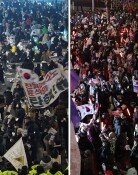Gov't must offer robust support for semiconductor factories
Gov't must offer robust support for semiconductor factories
Posted December. 26, 2023 08:02,
Updated December. 26, 2023 08:02
Japanese semiconductor factories with higher price competitiveness than Korea
There are anticipations that semiconductor factories established by American and Taiwanese companies in Japan will exhibit greater price competitiveness than initially foreseen. This is attributed to substantial subsidies provided by the Japanese government to regain leadership in the semiconductor industry, a position that had been lost to countries such as Korea. Comparatively, Korea's support measures are considered less robust, leading to predictions that Japan's semiconductor industry might surpass Korea's once again within the next 10 years.
Taiwan's TSMC, the leading company in semiconductor consignment production, is collaborating with Japan's Sony and other entities to establish a foundry factory in Kumamoto Prefecture, Japan, to complete the project by February next year. The Japanese government will subsidize 41% of the facility's investment, totaling 1 trillion yen (approximately 9.14 trillion won). To qualify for the subsidy, meeting the condition of operating the factory for more than 10 years and prioritizing product supply to Japan during shortages is required. This subsidy is expected to enhance the price competitiveness of TSMC's system semiconductors produced in Japan by an estimated 10%.
The American semiconductor company Micron Technology is constructing a next-generation DRAM factory in Hiroshima Prefecture, Japan. As the third-largest DRAM semiconductor company globally, after Samsung Electronics and SK hynix, Micron intends to invest 500 billion yen (approximately 4.57 trillion won) in this project. The Japanese government has approved a subsidy equivalent to 39% of the investment. This subsidy is anticipated to enhance the price competitiveness of DRAM produced at this facility by an estimated 5-7%.
In the highly competitive landscape of top semiconductor companies with minimal technology gaps, a 5-10% disparity in price competitiveness plays a pivotal role. It can be a decisive factor in determining success or failure. Such a margin allows companies to either lower prices or enhance profits, making it a critical element in the market dynamics. This could explain why TSMC has announced plans to establish the second and third factories in Japan, even before the first factory is operational. The situation has presented challenges for Samsung Electronics, which is striving to secure the second position in the foundry market, trailing behind TSMC.
The decision by the Japanese government to invest in the revival of the semiconductor industry reflects an acknowledgment that supporting the resurgence of semiconductors is crucial, even if it means compromising national pride and utilizing citizens' taxes for factories built by foreign companies. Furthermore, the Japanese government is actively contributing to revitalizing the semiconductor industry by annually providing 300 billion yen in subsidies to Rapidus, a foundry corporation established by Japanese foundry conglomerates.
In contrast, the incentives offered by the Korean government to encourage semiconductor companies to invest in facilities are confined to a reduction in corporate tax. No subsidies are provided to companies in the form of 'cash back.' In major countries, including Japan, the United States, the European Union nations, China, and India, governments, not companies, are leading the charge in the semiconductor battle. Our companies should not be left to fight alone against these foreign countries.







